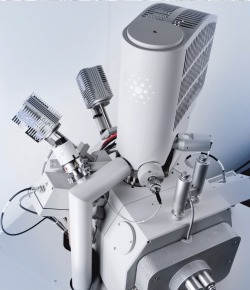$1million investment brings new equipment to bolster mineral research

Newfoundland and Labrador's iron ore industry is about to be seen in a whole new light thanks to a more than $1 million infrastructure investment from the Research & Development Corporation of Newfoundland and Labrador (RDC) and the Iron Ore Company of Canada (IOC).
New state-of-the-art mineral analysis equipment, known as a field emission gun scanning electron microscope with automated mineral liberation analyses (MLA) software, will be purchased by Memorial University of Newfoundland. The improved resolution and imaging capabilities of this instrument will allow researchers to distinguish between intergrown minerals on a very fine scale.
RDC's $996,178 investment leverages an IOC investment of $250,000.
"Collaboration is the key to future success and growth of Newfoundland and Labrador's mineral industry," said the Honourable Susan Sullivan, minister of Innovation, Trade and Rural Development. "This province has a diversified minerals industry that provides a wide variety of commodities to the world market. The forecasted gross value of mineral shipments for 2011 is $4.7 billion and exploration expenditures for this year are expected to be $122 million. Today's funding will allow industry and our academic communities to work together ensuring our mineral resources can be developed in a sustainable manner."
The mineral industry is one of Newfoundland and Labrador's largest industries, noted Glenn Janes, chief executive officer, RDC.
"Today's investment marks an important milestone in mineral research and will ensure researchers have the technical and industrial equipment they need to bolster this province's mineral research strengths and contribute to mineral industry exploration and development," he said.
With this new equipment, researchers can estimate and optimize the iron recovered in rock during the mining process for the province's largest mineral export, iron ore. Memorial has developed advanced methods to distinguish between the different minerals in test samples. The new equipment will employ these advanced methods to optimize iron recovery and feed throughput during the concentrating process. Providing a better understanding of ore concentrate characterization can lead to efficiencies in processing as well as increased product quality and subsequent value of the province's mineral assets.
"IOC is proud to partner with Memorial University in this research utilizing the MLA technology," said Robert Branton, general manager of product manufacturing with IOC. "Our expectation is through collaboration with Memorial University we will be able to advance our knowledge of the impact of ore quality characteristics on our processing facilities. This will ultimately allow for optimization of the overall mine to mill production chain."
"This highly-specialized equipment enhances our capacity for mineral analysis and is critical to our research collaborations with the IOC," added Dr. Christopher Loomis, vice-president (research) of Memorial University. "Our expectation is that the research potential of the new instrument, coupled with the collaboration with IOC, will transform the way that iron ore is mined in Labrador."
The new equipment will be a part of Memorial's Core Research Equipment and Instrument Training (CREAIT) Network and will be housed in the Bruneau Centre for Research and Innovation on its St. John's campus.